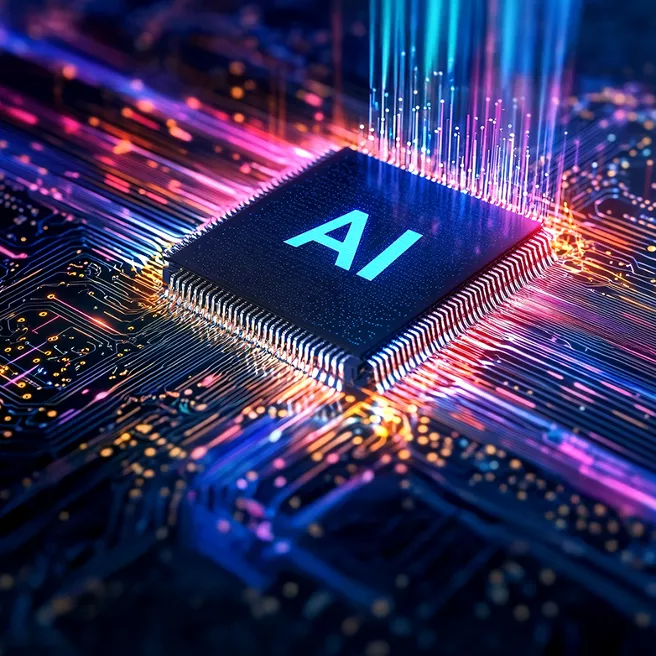By 2025, artificial intelligence has embedded itself so deeply into our lives that it often fades into the background. It drives our cars through congested streets, recommends life-saving medical treatments, approves—or denies—our loans, and even whispers into the ears of judges through risk assessment scores. For the average person, AI is both omnipresent and invisible, like a powerful but unseen tide that shapes the course of their days.
But behind many of these systems lies a fundamental problem: they are black boxes. We feed them data, they give us answers, but how they arrive at those answers often remains hidden. This opacity is not just a technical quirk—it’s a profound societal challenge. If an AI system refuses you a mortgage, recommends a risky surgery, or flags you as a potential fraudster, shouldn’t you have the right to know why?
Explainable AI, or XAI, emerged years ago to address this exact issue. It aimed to create AI systems whose decision-making processes could be understood by humans. In 2025, with AI now shaping critical aspects of governance, commerce, healthcare, and personal life, the call for transparency has never been louder. And yet, we still face the same tension: the most powerful AI models, such as massive deep neural networks, are often the least interpretable.
Why Transparency is Not a Luxury
In the early days of AI, transparency was treated as a nice-to-have, something engineers might add after building the main system. The assumption was that if an AI worked—if it predicted accurately or performed well in benchmarks—then the need for deep explanation was secondary. But over the years, painful lessons have shown otherwise.
Imagine a 2025 hospital where a diagnostic AI flags a patient as high-risk for a rare cardiac condition. The doctor trusts the system, but the patient’s family demands to know why such a drastic diagnosis has been made. The AI’s answer is a series of inscrutable vectors and weights, incomprehensible to any human. This lack of explanation undermines trust, slows treatment, and could even lead to legal disputes.
Transparency is not about satisfying idle curiosity—it’s about accountability, trust, and fairness. In sectors like healthcare, finance, and criminal justice, opacity can cause irreparable harm. When an algorithm discriminates against certain groups, whether through biased training data or flawed assumptions, the absence of explanation turns injustice into an invisible, unchallengeable fact.
The Paradox of Power and Opacity
Here’s the great paradox of AI in 2025: the more powerful our systems become, the less we understand them. Deep learning architectures now have billions of parameters, optimized through trillions of operations. They can model relationships in data so subtle and complex that no human could replicate them.
But this complexity makes them hard to explain in a way that is both truthful and understandable. A complete, technically accurate explanation of a neural network’s decision could span hundreds of pages of mathematical derivations. Yet, such an explanation would be useless to a judge, a patient, or a policymaker who needs a concise, clear rationale.
This is where the science of XAI becomes not just a technical challenge, but a philosophical one. An explanation is not simply about revealing “the truth” in raw form—it’s about communicating it in a way that matches human cognition, context, and needs. A good explanation is like a bridge between alien reasoning and human understanding.
From Rules to Stories: How Explanations Evolved
In the 1980s, expert systems—the early form of AI—had built-in explanation modules. These systems operated on explicit rules (“If symptom A and symptom B, then disease C”), making it straightforward to explain their outputs. A medical AI from that era could say, “I diagnosed pneumonia because the patient has a fever, cough, and abnormal chest X-ray.”
But as AI shifted to statistical learning and later to deep learning, these simple chains of reasoning gave way to opaque patterns hidden inside multidimensional space. Instead of explicit rules, modern AI “learns” from massive datasets, adjusting millions of weights to fit the patterns it sees. This means it can identify a malignant tumor with uncanny accuracy—but it might be doing so because of something unexpected, like a shadow in the image or even a hospital watermark correlated with positive cases in the training data.
To make these systems explainable, researchers developed techniques like LIME (Local Interpretable Model-agnostic Explanations) and SHAP (SHapley Additive exPlanations). These tools could highlight which features in the data influenced a specific decision, effectively giving humans a peek inside the black box. In vision models, this meant heatmaps that showed which parts of an image the AI focused on; in text models, it meant highlighting words or phrases that drove the classification.
By 2025, these techniques have grown more sophisticated, integrating natural language summaries and interactive dashboards. You can now ask an AI medical assistant not only for a diagnosis but for an accessible explanation that balances statistical detail with clinical reasoning.
The Human Side of Explanation
One thing that the last decade has taught AI researchers is that explanations are not purely a technical output—they are a human interaction. The same explanation that satisfies a data scientist might bewilder a patient. The same reasoning that convinces a judge might leave a software engineer unconvinced.
This means XAI is as much about psychology and communication as it is about algorithms. A good explanation must be tailored to the audience. In medicine, this could mean layering explanations: a high-level summary for the patient, a technical rationale for the doctor, and a mathematical trace for an auditor.
Furthermore, humans have a tendency to anthropomorphize AI. If the AI says, “I think this patient has a 78% chance of relapse because of prior symptoms and recent lab results,” people might assume the system “understands” in the human sense. It doesn’t—it’s mapping patterns, not forming beliefs. XAI must strike the delicate balance of making decisions understandable without misleading users into overtrusting the machine.
XAI in High-Stakes 2025
By 2025, AI is no longer just in the background—it’s making calls in life-and-death scenarios. In autonomous driving, explainability helps engineers pinpoint why a car swerved into the wrong lane. In climate modeling, it allows scientists to understand why an AI predicts severe drought in one region but not another.
In the legal system, the stakes are particularly high. Predictive policing tools, risk assessment algorithms, and sentencing recommendations all demand transparency to avoid reinforcing systemic biases. Without explainability, these systems risk becoming unchallengeable authorities, perpetuating injustice behind a veil of objectivity.
Financial institutions now face regulatory pressure in multiple jurisdictions to provide clear, auditable explanations for algorithmic decisions. A loan denial must come with a rationale that a non-technical customer can understand—one that can be scrutinized and, if necessary, contested.
The Regulatory Wave
The early 2020s saw the rise of AI regulations that placed explainability at their core. The European Union’s AI Act, parts of which took effect by 2024, explicitly requires certain AI systems to provide meaningful explanations to affected individuals. Similar frameworks emerged in the U.S., Canada, and parts of Asia.
But regulatory compliance is not the same as true transparency. Some companies have been accused of offering “explanation theater”—providing superficial, pre-packaged rationales that sound plausible but don’t reflect the system’s actual reasoning. This raises the question: in 2025, is the goal of XAI to make systems truly interpretable, or merely legally defensible?
The Battle Between Accuracy and Interpretability
One of the thorniest challenges in XAI is the trade-off between accuracy and interpretability. Simpler models—like decision trees or linear regressions—are easy to explain but may lack the predictive power of deep neural networks. Complex models often achieve higher accuracy but resist intuitive explanation.
Some researchers argue that in high-stakes applications, we should favor interpretable models even at the cost of a small drop in accuracy. Others maintain that accuracy should reign supreme, with post-hoc explanation tools bridging the gap. By 2025, there’s growing evidence that this is not always a zero-sum game—new architectures are emerging that are both powerful and inherently interpretable. These include self-explaining neural networks that build explanations directly into their decision pathways.
The Emotional Dimension of Trust
When people talk about “trusting AI,” they rarely mean they’ve audited its source code or replicated its results in a lab. Trust in AI is often emotional—it comes from a sense that the system is understandable, consistent, and fair. Explainability is the foundation of that trust.
Consider an autonomous drone delivering medical supplies in a disaster zone. When it makes a risky maneuver to avoid a collision, the ground team wants more than a technical log—they want an explanation they can quickly grasp and act upon. A clear, accurate explanation not only informs them but reassures them that the system is behaving as intended.
This is why transparency still matters in 2025—not just because it satisfies regulators, but because it humanizes AI. It turns a mysterious, alien intelligence into a collaborator we can question, challenge, and ultimately work alongside.
The Road Ahead
In the coming years, the demand for XAI will only grow. As AI systems integrate into ever more sensitive domains—mental health counseling, global governance simulations, even autonomous scientific discovery—the need for explanations will be not just a legal requirement but an ethical imperative.
We are moving toward an era where explanations will be multimodal: combining natural language, visualizations, simulations, and interactive dialogues. Imagine a future AI tutor that not only answers a student’s question but shows step-by-step how it arrived at the answer, offers alternative reasoning paths, and lets the student challenge its assumptions in real time.
Yet, the core challenge will remain: making sure explanations are truthful, relevant, and free from manipulation. A bad explanation can be worse than none at all—it can mislead, obscure, or falsely reassure.
Conclusion: Transparency as the Soul of AI Ethics
In 2025, explainable AI is no longer an optional feature. It is the difference between AI as an opaque authority and AI as a trusted partner. In every sector, from medicine to justice, transparency is the thread that binds technology to human values. Without it, AI risks becoming a force we cannot question, a system that makes decisions in shadows.
The goal of XAI is not to make every person an AI engineer. It is to ensure that when AI makes a decision that affects our lives, we can see the reasoning, challenge it when necessary, and trust it when warranted. Transparency is the soul of AI ethics, the safeguard that ensures our future with intelligent machines is one we can navigate—not just endure.
If AI is the engine of the 21st century, then explainability is the steering wheel. Without it, we may move faster than ever before—but we won’t know where we’re going, or why. And in a world shaped by algorithms, that’s a risk humanity cannot afford to take.






